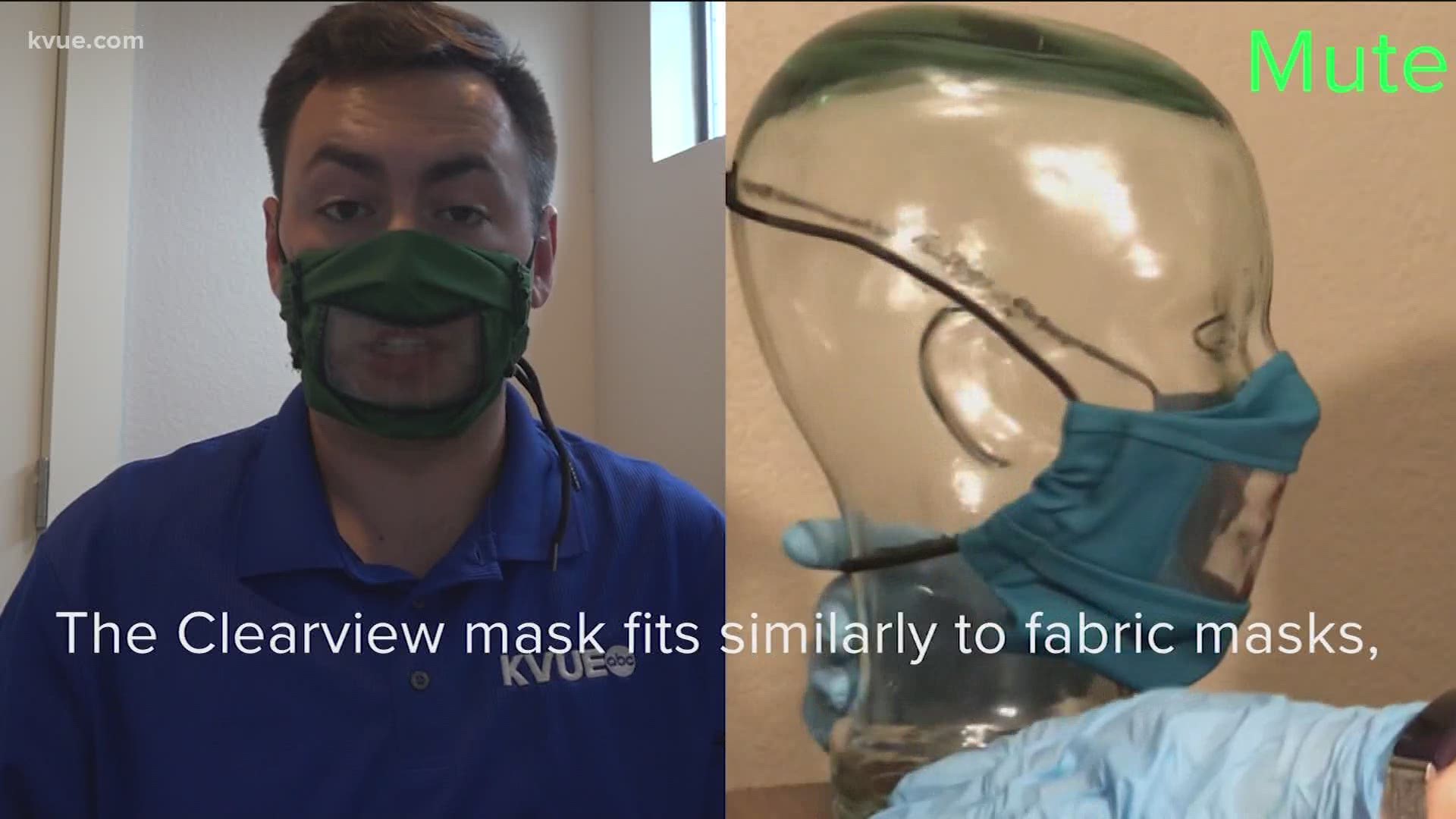AUSTIN, Texas — Communication should not be a guessing game.
"I hear about 50% of what people say, so it's kind of like a game of fill in the blanks," Madison LeBlanc said. "It's like I'm playing my own game of mad libs. I think, 'Oh, they said, 'shoes,' but they'll say, 'no, I said 'walls.'"
LeBlanc contracted tonsillitis as a child. Scar tissue ended up damaging her hearing. She's now deaf in one ear and hard of hearing in the other.
"I use sign language whenever people know it, but not a lot of people do know it," LeBlanc said. "I was taught at a very young age so I had accessibility to language."
LeBlanc also uses hearing aids to listen but tends to read lips to understand people. With people wearing masks in order to slow the spread of coronavirus, she calls the experience "atrocious" in terms of communication.
"I've had a lot of experience trying to get people to repeat themselves, especially while acting with caution with the six-foot rule," LeBlanc said. "There's even more of a communication barrier in place because I'm six feet away from people and then with the mask, I'm unable to lip-read or have my hearing aids kind of pick up the sounds."
RELATED:
As a solution, LeBlanc bought a see-through mask called Clearview. Fellow Austinite Alissa Duquette sewed it together and has been making and distributing them through Austin Mask Exchange.
"I really didn't realize how few people were making them," Duquette said. "I've had people order them who are deaf, hard of hearing, and, surprisingly, even photographers who are looking to demonstrate facial expressions to models."
The Clearview masks have a vinyl window with an anti-fog coating so people can communicate better. LeBlanc wears hers to show people they exist and they're comfortable enough to wear. She even bought one for her boss.
"He said he's going to try and start wearing it on Monday and see how it goes for him," LeBlanc said. "Hopefully, it goes well because I like hearing my manager!"
Alisa Nakano was born deaf. She teaches American Sign Language to students. But with masks and virtual tutoring sessions and classes, it's hard for her to know if her students are signing properly.
"We rely on mouth morphing," Nakano said. "Facial expressions and body language are all part of the grammar of ASL and if I can't see the students, I don't know if they're doing it right."
Nakano hopes whenever people start going back to work and school, see-through masks like the Clearview will be the standard. Fabric masks offer protection from spreading COVID-19, but covers communication directed towards deaf and hard of hearing people, which frustrates Nakano.
"If you wear a mask, you're removing 50% of the facial expressions and body language communication away," Nakano said. "At the store, in general, I know people say, 'Hi!' and the pleasantries we exchange I can kind of predict, but with the mask I just feel so lost. ... Then they pull it down and are talking, but it defeats the purpose of the mask, right? They think they're being nice when they pull their mask down, but they're not. They're exposing me [possibly to COVID-19]."
RELATED:
Duquette said making the mask is not much different than the regular fabric ones. She can get anywhere from six to 10 done in a single batch, which takes about 90 minutes to make after she gets off work.
LeBlanc hopes people will start using them more since it's a win-win: communication for the deaf and hard of hearing community, while also slowing the spread of COVID-19. Because of a health condition, she visits doctors regularly and finds the communication barrier is even higher there.
LeBlanc and her doctors will pass notepads back and forth, making sure they're on the same page. Her doctors wear masks because of their being on the frontlines of the virus. She hopes they will adopt the see-through mask to improve communication between patients without risking contact more than necessary.
PEOPLE ARE ALSO READING:

